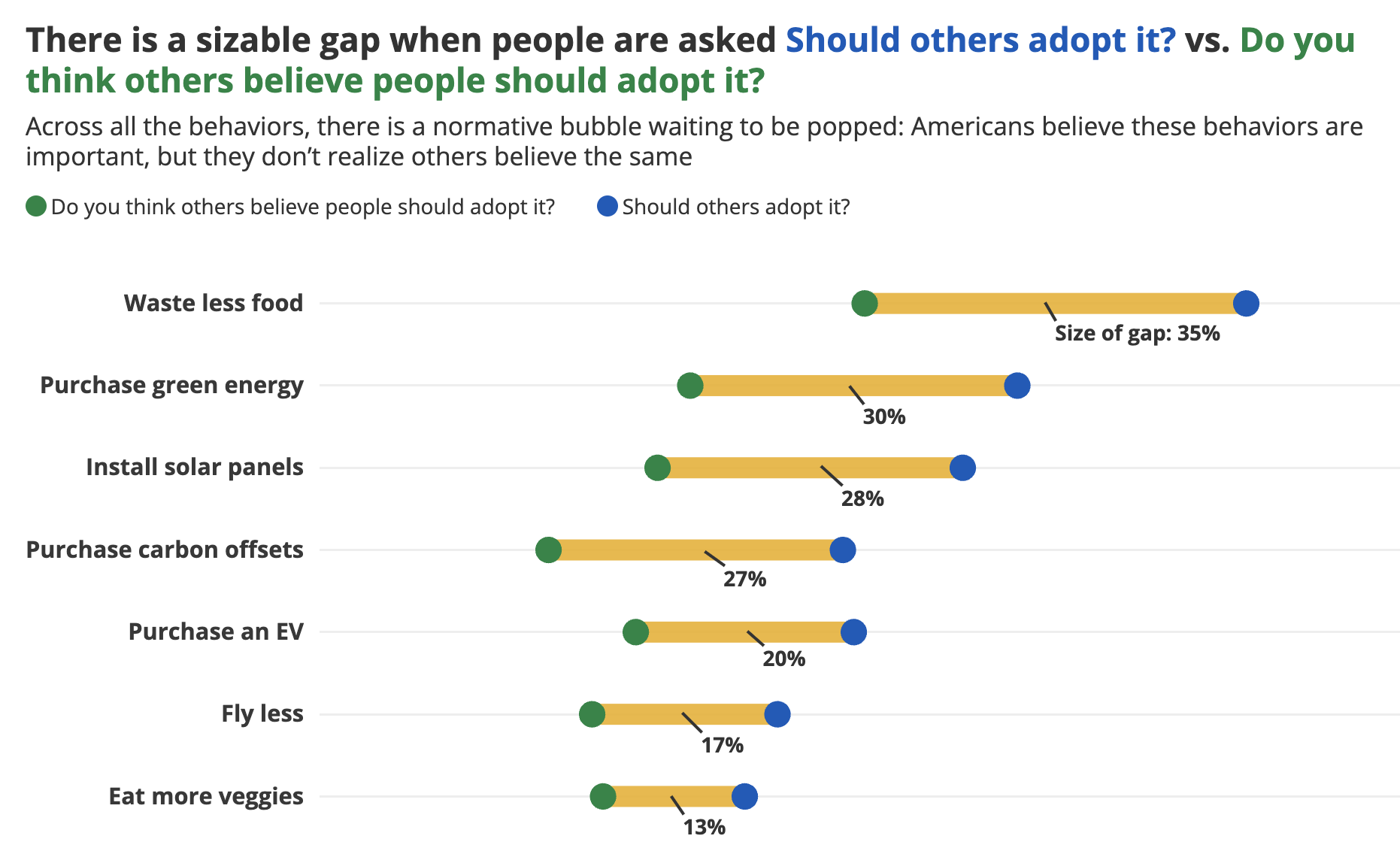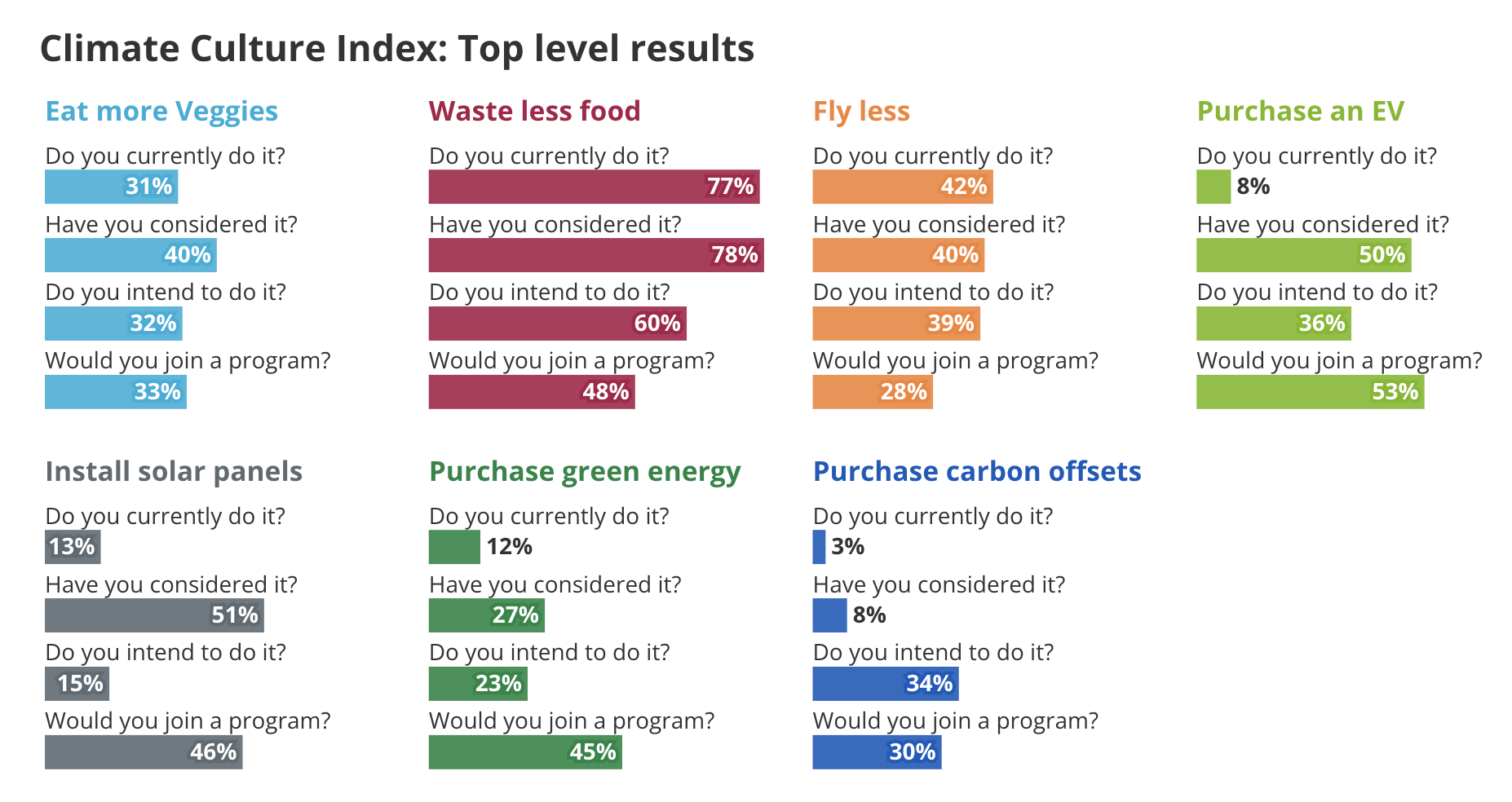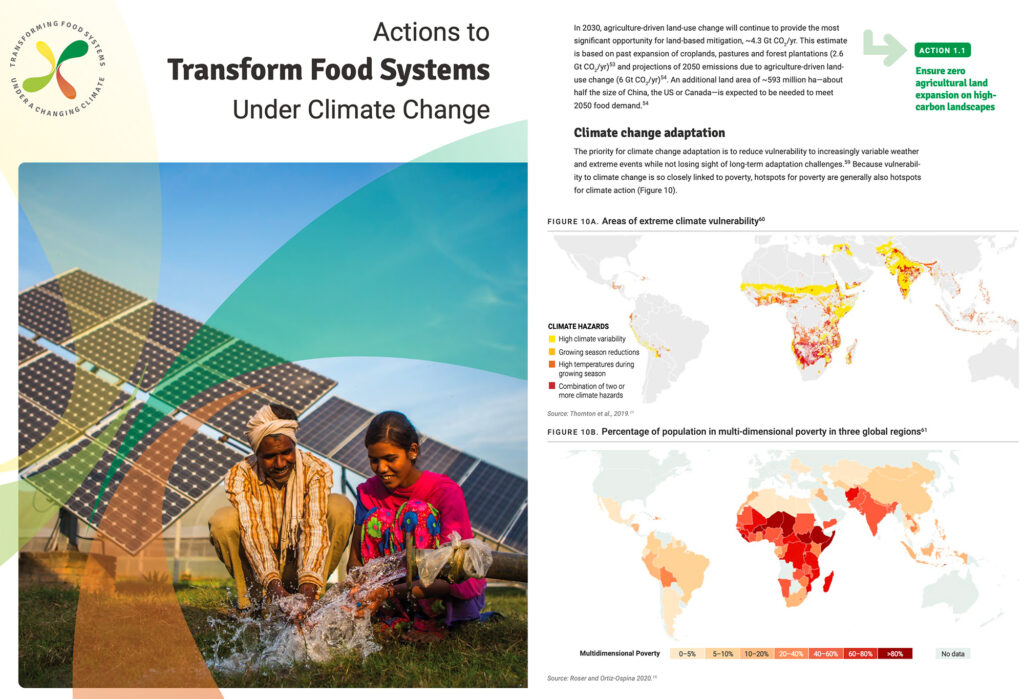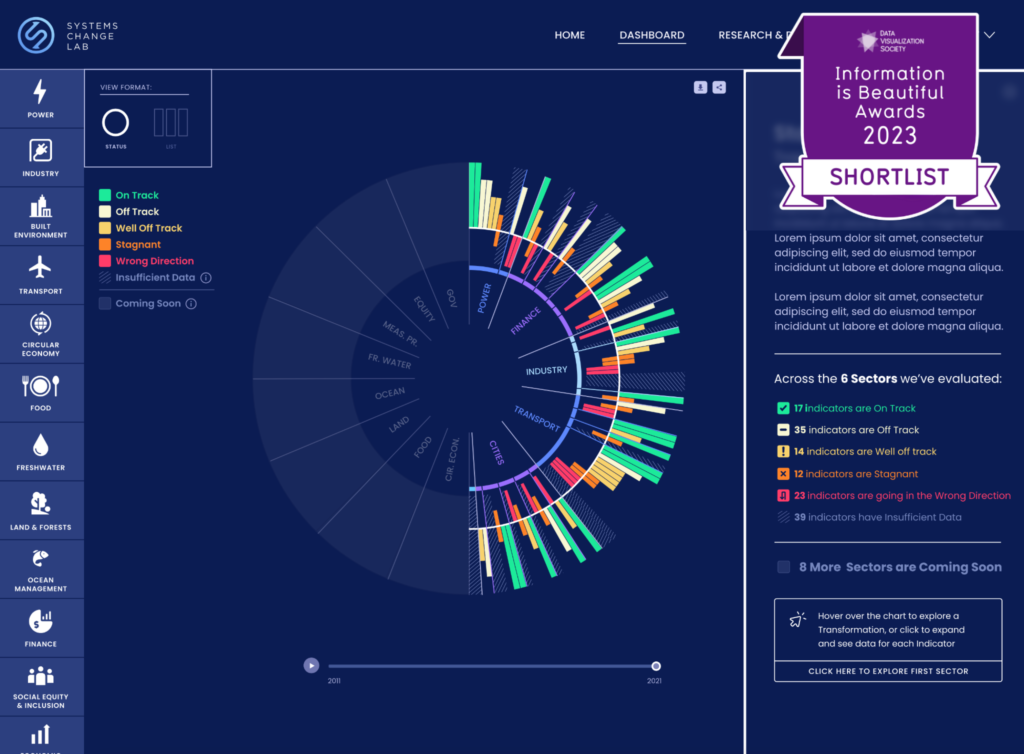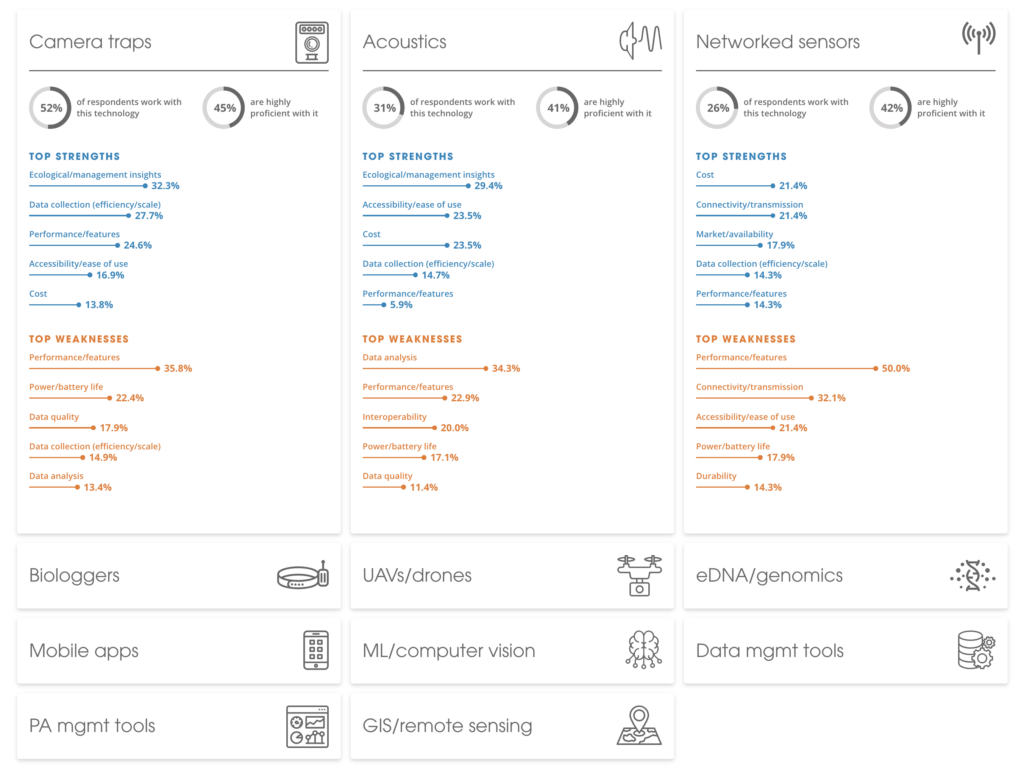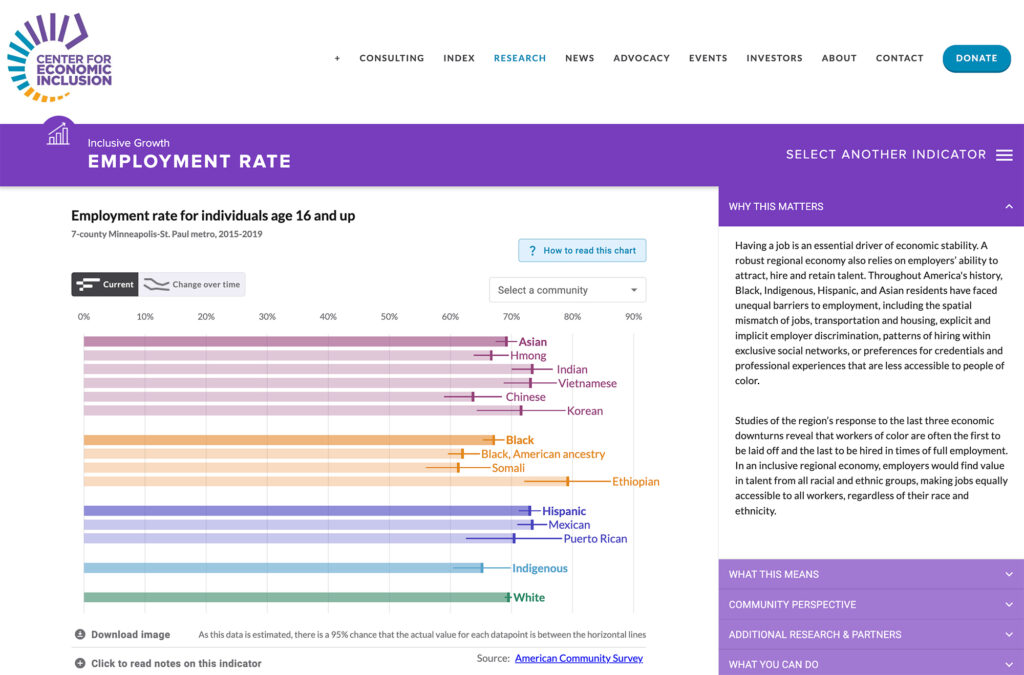The Rare study asked questions about 7 behaviors: waste less food, purchase green energy, install solar panels, purchase carbon offsets, purchase an electric vehicle, fly less, and eat more veggies. The best predictor of climate action is whether a person believes that other people are already taking action on one of these behaviors. However, a large perception gap exists between what people think themselves, and what they believe other people are thinking. The first visualization shows this gap for the seven behaviors:
We also produced a chart showing the full survey questions asked for each behavior. For example, when asked about wasting less food (i.e. eat less meat), a broad majority think everyone should do it, and attempt to reduce their own food waste. Rare created dedicated pages for each of these behavior specific charts, to contextualize the results.
While simple charts, they clearly and powerfully communicate the important findings of Rare’s novel study. Using tools like Flourish allows us to move quickly and nimbly to produce production ready charts for projects like this.
